Choosing between a walking frame or rollator
It can be overwhelming with all the different types of walking aids on the market; Which one do I buy? Which one is right for me? Or do I even need one? It can be hard to make the right choice, especially when you spend your hard-earned cash on it! This guide gives you a bit of direction when looking for a new walking frame or rollator. See more information below!
WHATS THE DIFFERENCE BETWEEN A WALKING FRAME AND ROLLATOR/WALKER?

WHAT IS A WALKING FRAME USED FOR?
A walking frame is used for extra stability and prevents falls from happening due to the user losing balance while walking. They are four-legged frames usually made from aluminium but can be made of other materials. Generally for people who can still walk, have the strength to move things, but require some assistance with their balance. They are great for assisting with walking which can improve the users walking distance.
TYPES OF WALKING FRAMES.
Standard walking frame
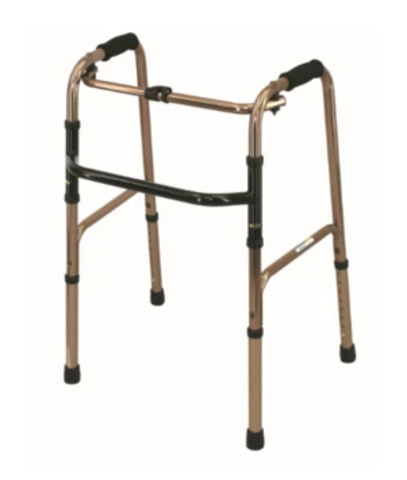
Advantages
- Super stable, provides stability & balance
- Easy to use
- Sturdy
- Multiple grab points
Disadvantages
- Hard to turn
- No brakes
- No seat
Walking frame with wheels and ski
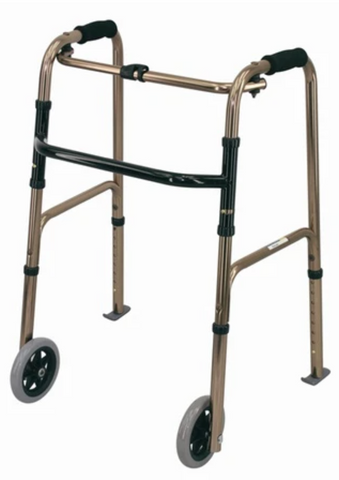 Advantages
Advantages
- Provides stability & balance
- Easy to use
- Sturdy
- Multiple grab points
- Easier to push than standard frames
Disadvantages
- Not suitable for outdoor use
- Hard to turn
- No brakes
- No seat
Walking frame with wheels
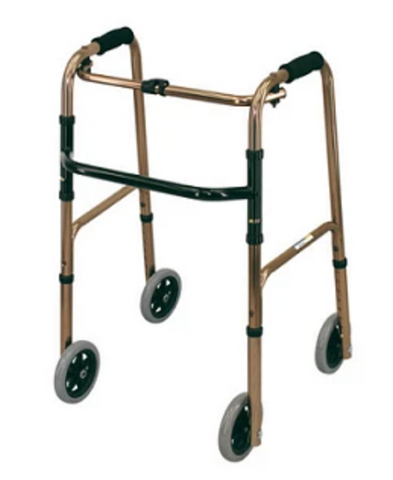
Advantages
- Provides stability & balance
- Easy to use
- Sturdy
- Easy to push
- Multiple grab points
Disadvantages
- Hard to turn
- Not suitable for outdoor use
- No brakes
- No seat
WHAT IS A ROLLATOR/WALKER USED FOR?
A rollator/walker provides balance, increases walking distance, and improves the user's confidence when walking. They even come with a seat so that the user can rest when they need to. Rollators/walkers often come in four wheels or three-wheel variants. Each has its benefits and disadvantages, which you can learn more about below.
TYPES OF ROLLATORS/WALKERS.
Standard
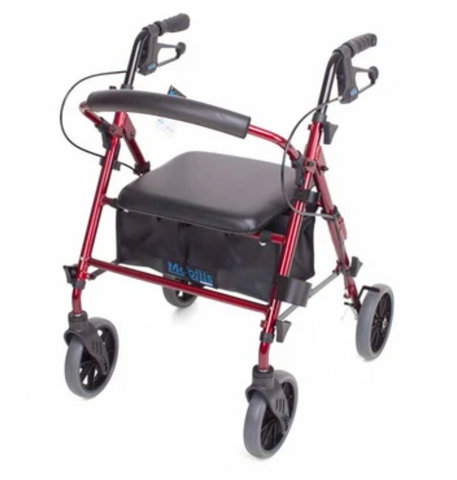
Advantages
- Easy to push
- Wheels rather than legs
- Easy to apply brakes
- Easy to adjust
- Comes with a seat to rest on
Disadvantages
- Less stable than a walking frame
- Sometimes difficult to store or fold
Narrow
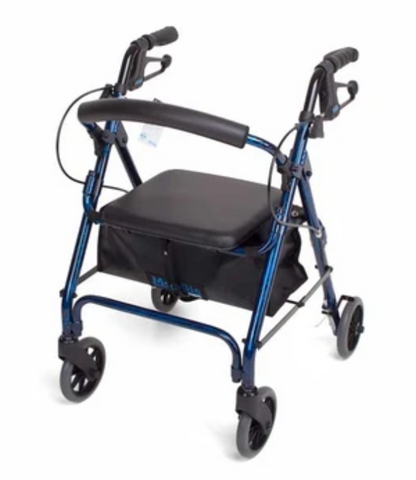
Advantages
- Easy to push
- Wheels rather than legs
- Narrower than standard walkers (fits between doorways easier)
- Ideal for the more petite person
- Easy to apply brakes
- Easy to adjust
- Comes with a seat to rest on
Disadvantages
- Less stable than a walking frame
- Sometimes difficult to store or fold
Knee
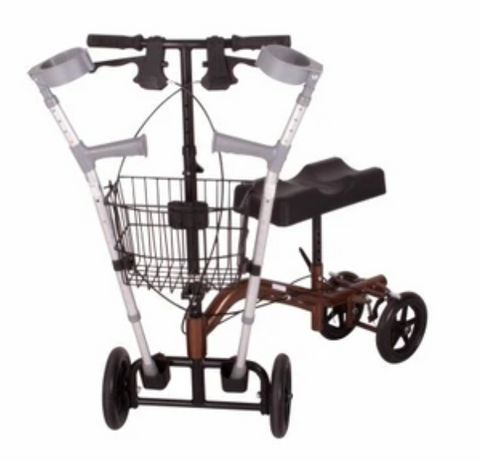
Advantages
- Great for taking the weight off of one leg
- Comfortable
- Wheels rather than legs
- Easy to apply brakes
- Easy to adjust
- For users with limited strength
Disadvantages
- Less stable than a crutches
- Sometimes difficult to store or fold
Carbon fibre
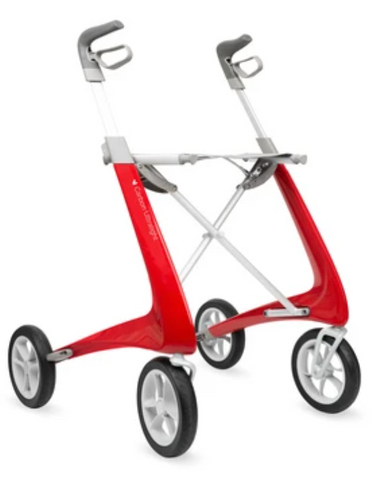
Advantages
- Lightweight
- Strong
- Wheels rather than legs
- Comes with a seat to rest on
- Easy to apply brakes
- Easy to adjust
- For users with limited strength
Disadvantages
- Cost more than standard walkers
Three wheeled
Advantages
-
Easy to turn
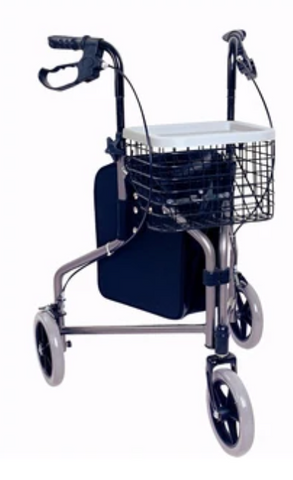
- Wheels rather than legs
- Easy to apply brakes
- Easy to adjust
- For users with limited strength
Disadvantages
- Cost more than standard walkers
- Less stable than standard walkers due to having only three wheels
Bariatric
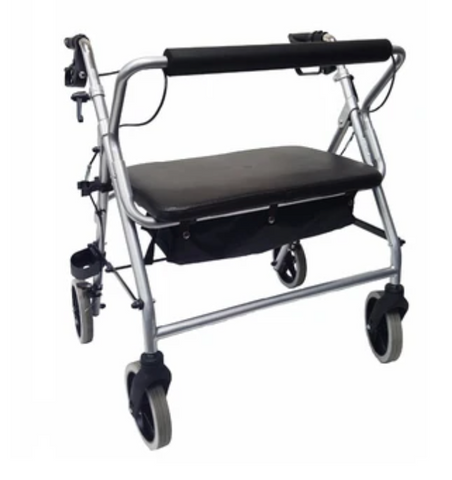
Advantages
- Strong
- Wheels rather than legs
- Comes with a seat to rest on
- Easy to apply brakes
- Easy to adjust
- For users with higher body mass
Disadvantages
- Bulky and heavy to handle the user weight
- Cost more than standard walkers
WHICH ONE IS RIGHT FOR ME?
Walking frame
Walking frames are more stable but are more challenging to manoeuvre than rollators/walkers. If you are looking for stability and have the strength to move a walking frame, this may be the right choice.
To view our walking frames, click here.
Rollator/Walker
Rollators/walkers are stable and are easier to manoeuvre than walking frames. If you have limited strength and are looking for something easy to push, this may be your right choice.
To view our rollators, click here.
If you are ever having trouble knowing if you need a walking frame or a rollator it is always best to speak to a medical professional as they will be able to point you in the right direction.
